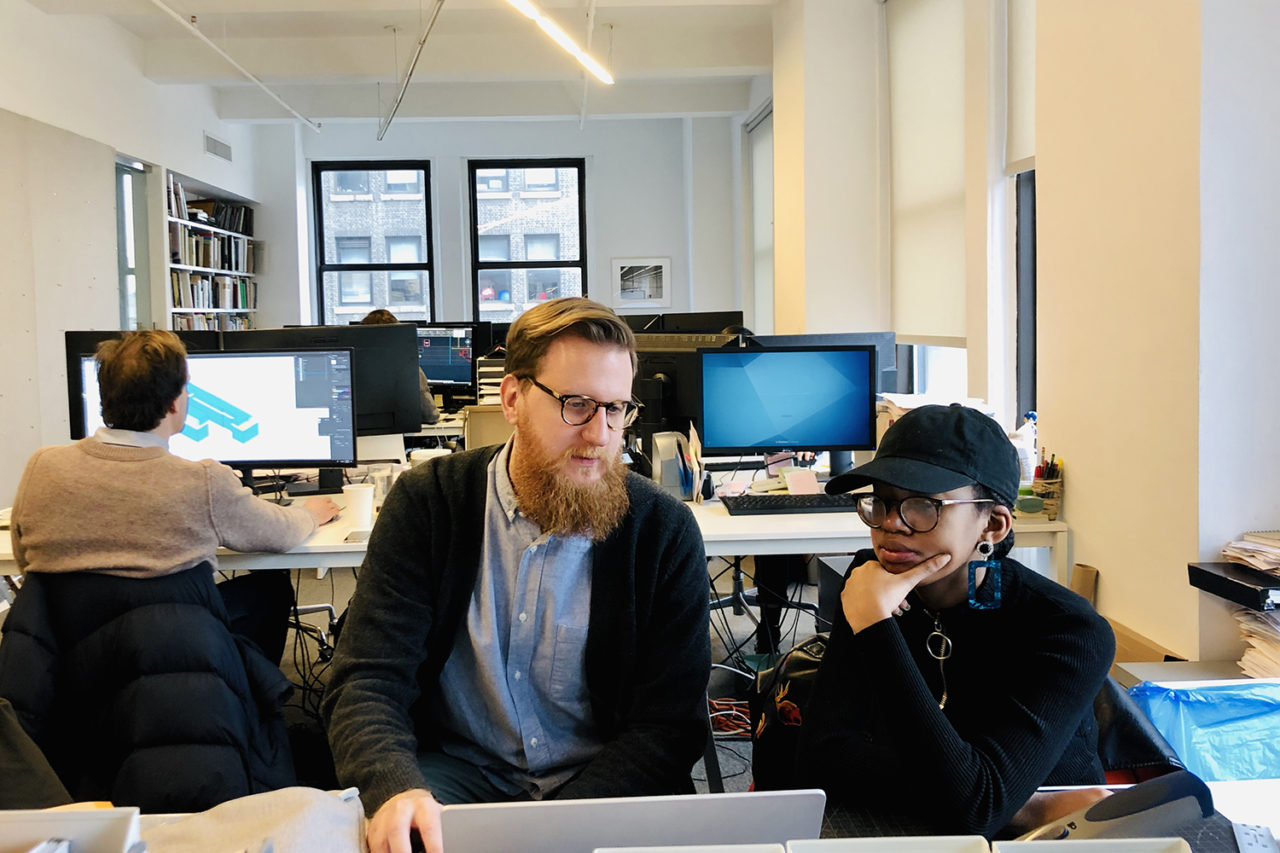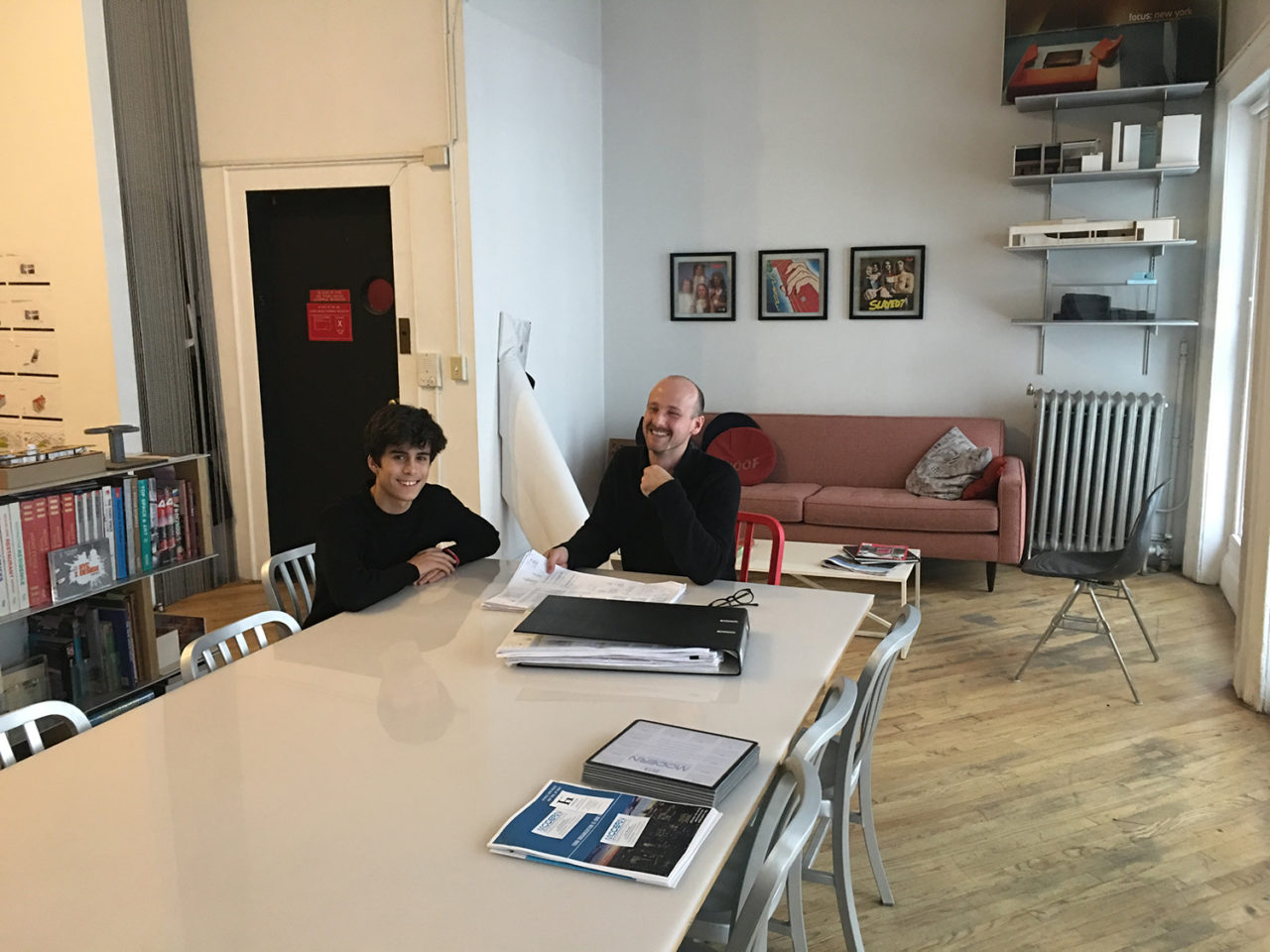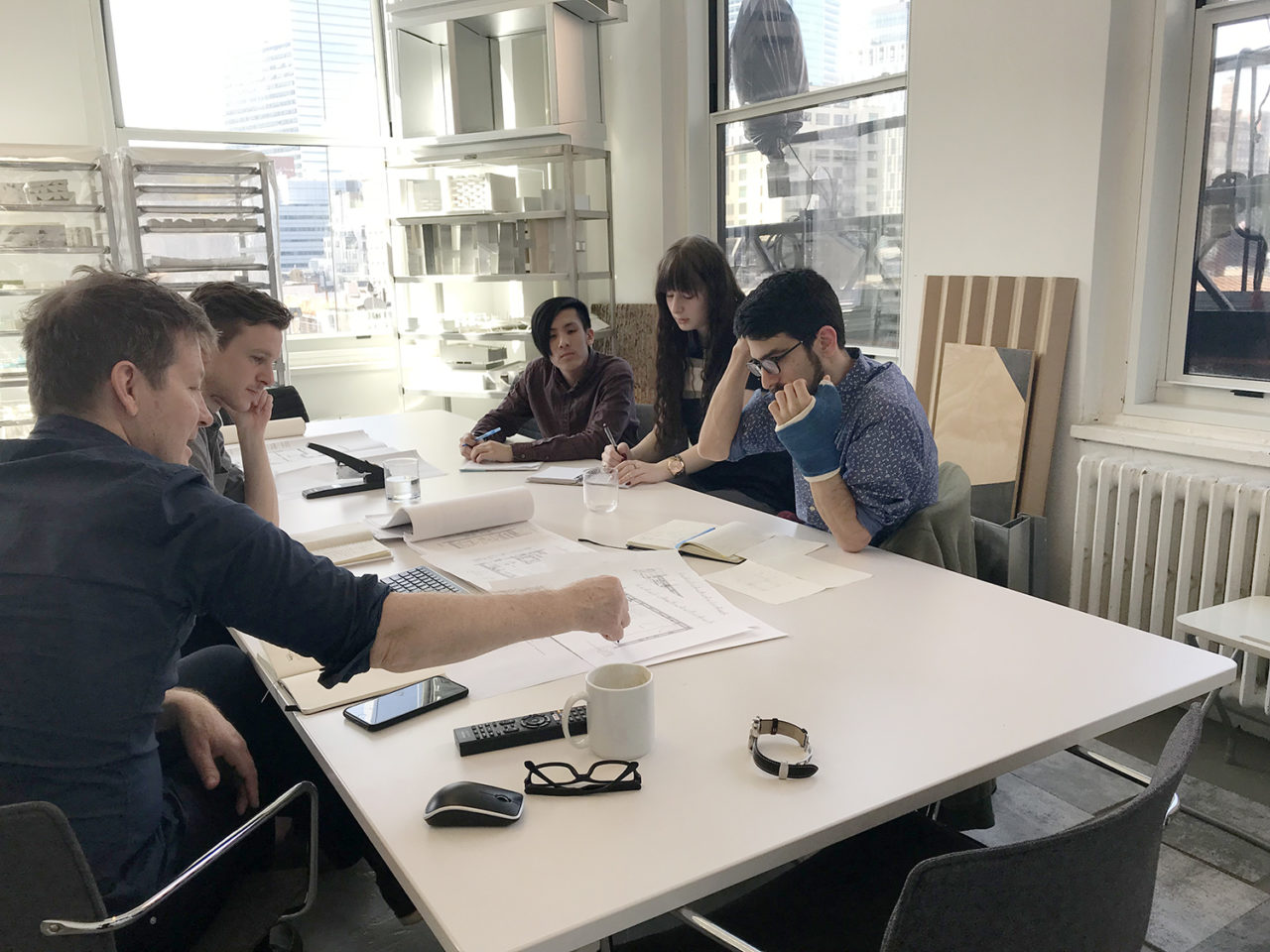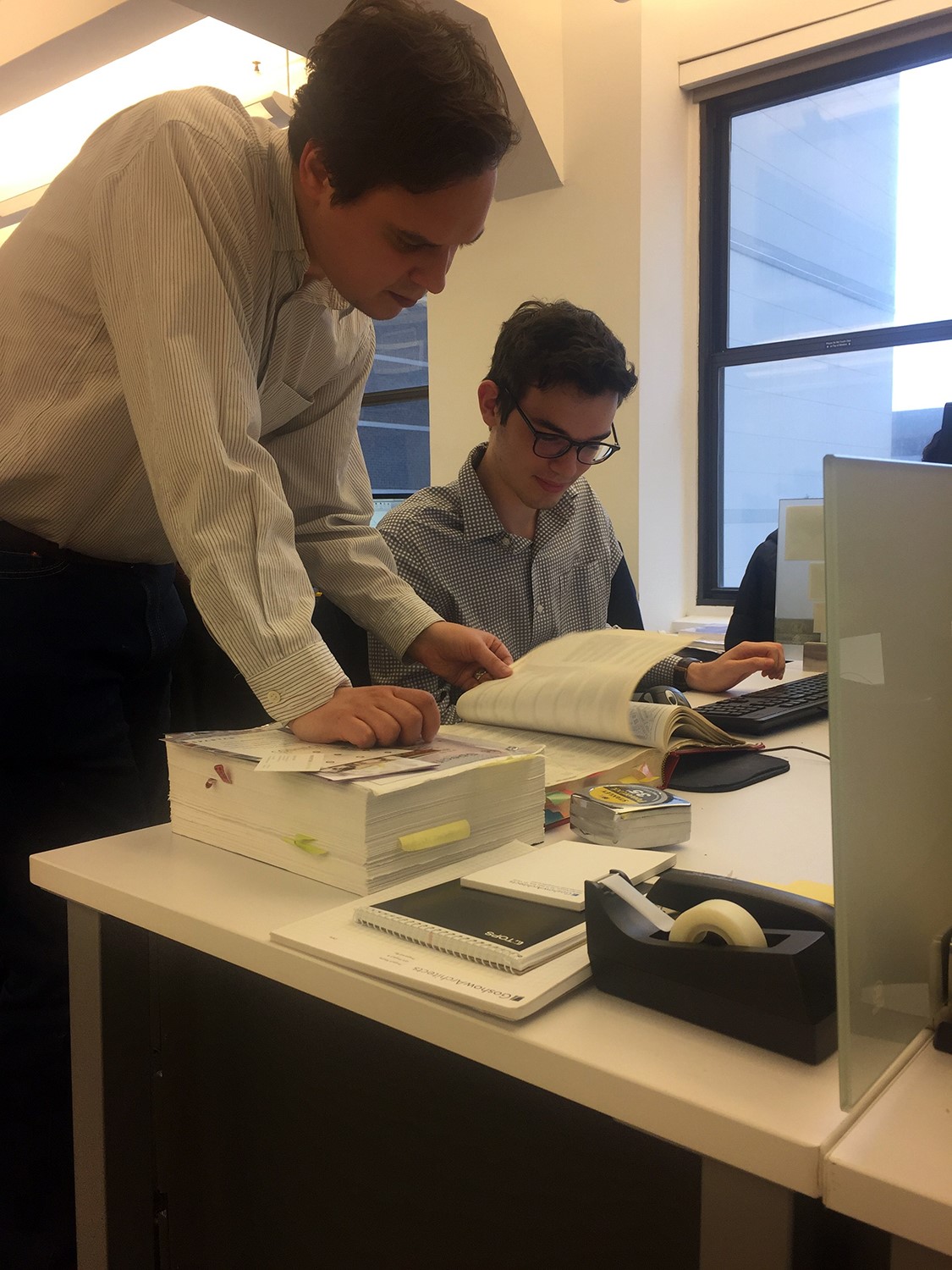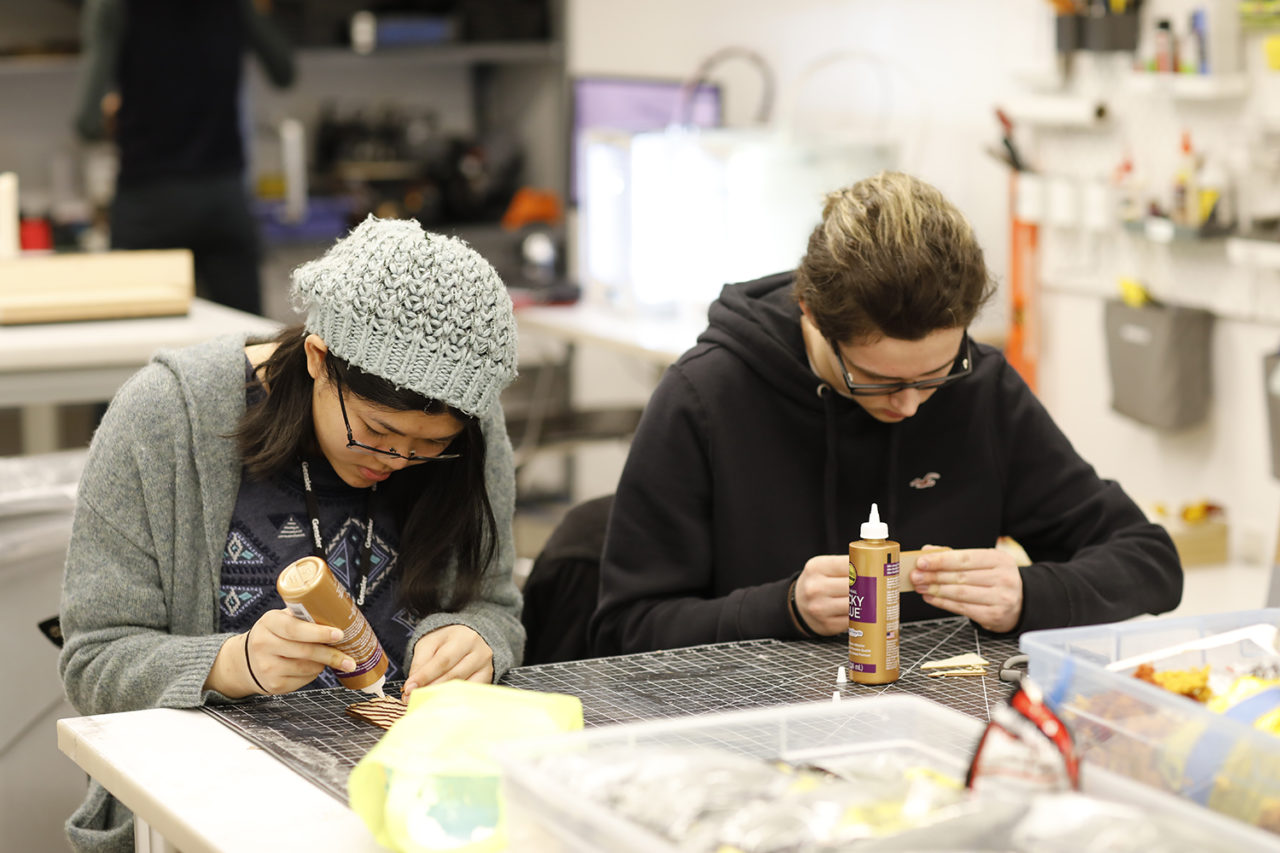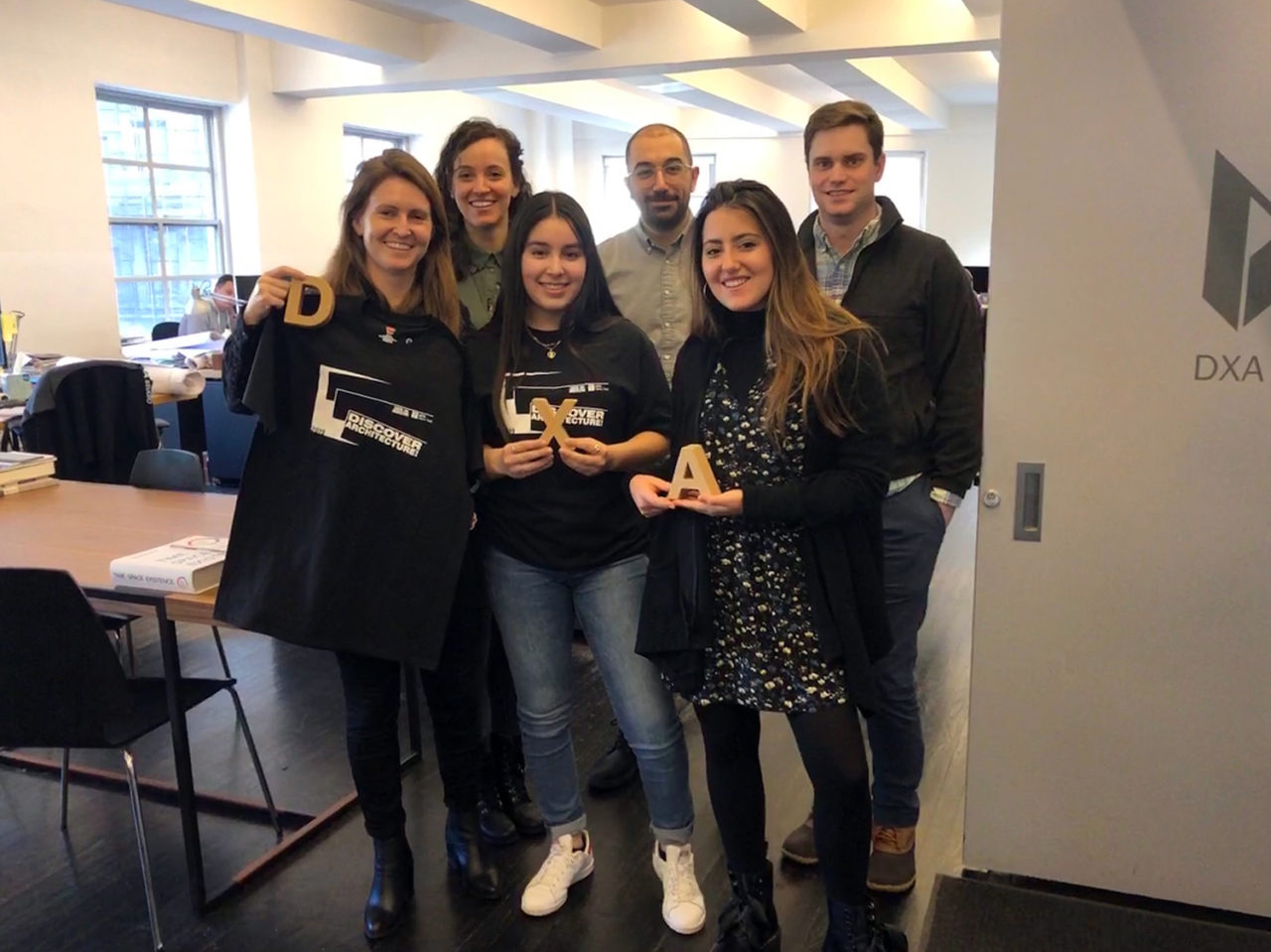by: Hayes Slade, AIA
Two of the most pressing issues facing our profession today are our pipeline problem and the lack of visibility into the profession. These are, of course, related. Starting a year ago, AIA New York has been working to create a high school career discovery program to provide personal exposure to architecture for high schoolers at the cusp of making decisions for their future. As part of my presidential theme, BUILDING COMMUNITY, I’m particularly focused on issues of outreach and support. We have the imperative to work together as a community to address the issues of access and transparency to the profession. One of the most valuable assets of AIANY is its professional network, which we can leverage to create opportunities that will work to remove these thorny issues by providing a larger audience with personal experience of the field. I thought to call it “Expose Yourself to Architecture,” but somehow that title got shot down.
AIANY distributed the invitation and application for Discover Architecture! to public high schools and identified schools that had previously worked with the Center for Architecture’s K-12 programming, along with schools with art/design/architecture programs or classes. Many students applied and the spots for this free career discovery opportunity were highly sought after. For this pilot program, 25 students from 15 schools were selected for placement.
Nineteen brave firms volunteered to host the selected applicants over the week-long public school winter break. For the most part, students were placed individually in firms to ensure that they would be directly interfacing with their hosts and forming their own personal opinions. Some of the activities they were engaged in included site visits, meetings with clients and collaborators, and software tutorials. While experiences differed across firms, the most important component of the program was to provide general exposure to the profession as it is practiced on a daily basis.
On the last day of the break, students convened at the Center for Architecture for some team building, a mini charrette exercise led by the Center for Architecture K-12 team, and a small celebration with certificates and t-shirts.
Insights gleaned from the students demonstrate the level of care and attention provided by the host firms. Some of the reactions to the program illustrate how effective the program was in clarifying common misconceptions people (even engaged people) have about our field.
Corrine Soo, who was placed at Gensler, said, “I learned that architecture is somewhat of an umbrella term since many more fields are a part of it, and that learning the basics of architecture is a way of preparation if I want to go into any of these various fields. I feel like the program was able to give me a sense of how an architectural firm works and the importance of cooperation between all the different types of architects in a project.”
Kareena Thadhani, who spent her winter break with MBB, said, “They did an excellent job at hosting me and made me feel so warm and comfortable in an environment where I was so unknown. Giving me a tour around the whole office and introducing me to every individual in the firm made me feel welcome and not an outsider.”
Catherine Moreno was welcomed at Spacesmith’s office. She said, “I found talking/conversing with the head of marketing and business the most interesting experience. It was fun to talk about not only architectural-based skills in firms but how they sell the firm and acquire different projects.”
The firms also expressed highly positive reactions to the program. Several firms look forward to participating again and even hosting additional students in years to come.
The Center for Architecture has tremendous programming for school children. AIA is the preeminent resource for professionals. The goal of this program is to start to build the bridge between these two organizations and pave the way for young people, regardless of background or familial exposure to the field of architecture. In the coming weeks we are planning to reconvene and take stock of the program and discuss what other experiences we can provide to high school students who may be thinking of applying to architecture programs. Some initial ideas that spring to mind are portfolio strategy and review as well as summer activities. Please watch this space; we are hoping to build on this initial success and the enthusiasm generated, all around. We can definitely use your help!








